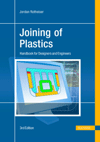Enabling the Reshoring Surge: Best Practices for Strengthening the U.S. Workforce

A technician uses a tablet with eFactoryPro, a computerized maintenance management system.
Photo courtesy Advanced Technology Services

Maintenance technicians are essential to keeping assembly systems producing quality products 24/7.
Photo courtesy Advanced Technology Services


For want of a nail, the shoe was lost.
An October 2023 Medius survey found that 69 percent of U.S. manufacturers have started to reshore and 93 percent plan to increase their pace of reshoring. To make that happen, we need a much larger and stronger skilled workforce. A skilled workforce is the nail for reshoring.
A May 2023 survey by Chief Executive magazine concluded that “labor availability” and “increasing costs” were the two leading obstacles to reshoring, with more than twice as many responses as any other obstacle. Developing a larger and better trained workforce will directly overcome the availability obstacle and help overcome the cost obstacle by increasing capacity utilization and productivity.
The No. 1 legislative priority of the Reshoring Initiative has long been strengthening our skilled workforce. The U.S. is making progress, with more community college programs, apprenticeships and certificates, such as those of the National Institute for Metalworking Skills, the Manufacturing Skill Standards Council, and the American Welding Society. But, more needs to be done.
Technical Talent Is at a Premium
One job, in particular, that deserves more attention is maintenance technician. These professionals are essential to keeping assembly systems producing quality products at high rates 24/7. Unfortunately, chronic skills gaps in this field are putting uptime, productivity and performance at risk. A 2023 report from the National Institute of Standards and Technology found that the “five-year annual compound growth rate in manufacturing labor productivity is -0.6 percent.”
Maintenance technicians can play a big role in improving that statistic—if they’re available. Over the past 40 years, multiple recessions, increased global competition, and a pandemic have taken a toll on the profession. Perceptions of manufacturing as a career path soured, and now vast numbers of high-level baby boomer technicians are retiring.
That’s a problem, particularly now with manufacturers increasingly leveraging advanced technologies, such as smart sensors, IIoT connectivity, machine learning, and big data analytics. It is imperative—and possible—to develop a ready supply of maintenance technicians who possess the sophisticated skills associated with modern manufacturing and Industry 4.0 technologies.
Fortunately, digitalization also holds the key to overcoming the skills shortage by enabling innovative approaches to recruiting, training and retaining high-caliber maintenance technicians.
Recruitment, Training and Retention
Recruitment continues to be a major issue, with some studies projecting a shortfall of 2 million manufacturing workers in 2030. Successful recruiters will adeptly leverage tools, such as job boards, social media, and relationships with trade schools and community colleges. To better attract quality candidates, they are challenging preconceived notions that maintenance roles are strenuous, monotonous and undervalued.
Strategic targeting helps to offset the loss of institutional knowledge to retirement. For instance, recruiters are looking to younger generations who consider advanced digital training methods, robust technician development programs, and achievable career paths highly desirable. To expedite onboarding, recruiters are targeting active-duty military and veterans who are familiar with technical fundamentals and know the value of a culture of continuous improvement.
Digital learning platforms provide new ways to educate workers on hard and soft skills on an ongoing basis. A good example is the SkillPoint Technical Training program from Advanced Technology Services (ATS), an industrial maintenance, technology and parts company based in Peoria, IL. The program provides custom digital training packages based on the results of site tours, employee interviews, and technician training assessments that reveal skills gaps and development needs. Delivered to technicians at their job sites, the tailored packages include a technical simulator, camera and audio speakers. A continuous process enables training modifications based on new or needed skill sets.
Such platforms, which are matched to the individual’s needs and the manufacturer’s technology, provide training and troubleshooting experience for complex production machinery without risking safety or equipment damage. ROI is expedited by improving the teacher-to-student ratio, accelerating the learning curve, and facilitating knowledge transfer.
Retention, especially of new employees, has become a problem in all industries. Prioritizing digital training and upskilling allows employers to better nurture, retain and promote maintenance technicians. Additionally, tools such as refresher instruction videos help to boost engagement, confidence and overall job satisfaction.
Ongoing training has proven to support retention with an overall annual rate of 73 percent, compared to the industry’s typical 40 percent. ATS’s technician development program is built around a 70/20/10 learning model: 70 percent on-the-job training, 20 percent coaching, and 10 percent classroom or online training. The program has entry-level technicians progressing to midlevel in three years and to senior level in five years.
Additionally, ATS’s new SkillBridge program, a partnership with the Defense Department, has strengthened veteran outreach by providing exiting service members an opportunity for a six-month internship with the company. Already, three interns who joined the company through this program have converted to full-time employees.
Editor’s note: Harry Moser is the president of the Reshoring Initiative. His column will appear every other month, alternating with Austin Weber’s “On Campus.” Has your company reshored production? Are you thinking about it? We’d like to hear of your success or help you achieve it. With your approval, we would love to report on your successes or opportunities in future issues. Contact harry.moser@reshorenow.org.
Looking for a reprint of this article?
From high-res PDFs to custom plaques, order your copy today!










